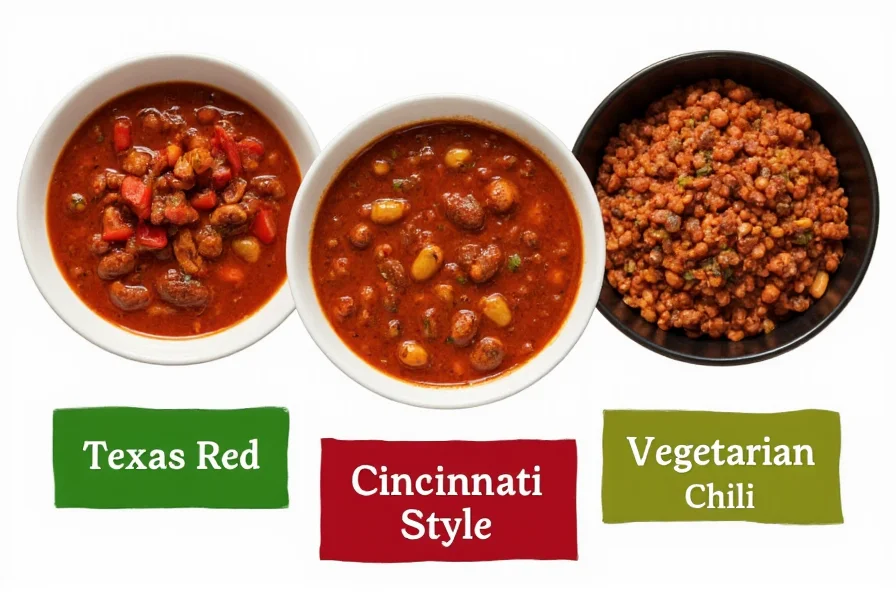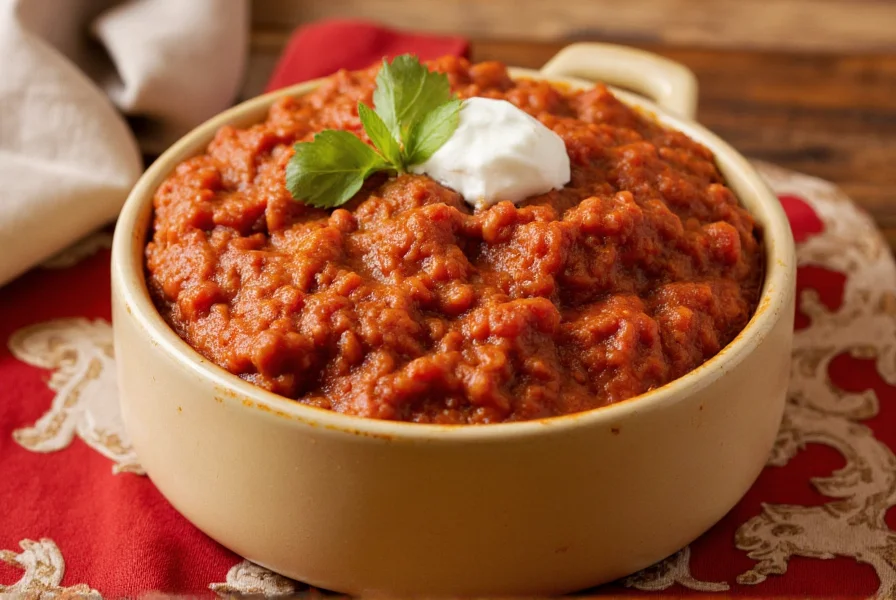Chili con carne, commonly known as chili, has evolved from its Tex-Mex origins into a beloved comfort food across America. Understanding the fundamentals of a great chili recipe transforms this simple dish into something extraordinary. This guide covers essential ingredients, preparation techniques, and variations to help you create the perfect pot of chili every time.
Essential Ingredients for Authentic Chili
The foundation of any excellent chili recipe starts with quality ingredients. While regional variations exist, these core components create a balanced flavor profile that defines traditional chili:
| Ingredient | Function | Quality Tips |
|---|---|---|
| Ground beef (80/20) | Provides rich meaty base | Choose freshly ground for best flavor |
| Chili powder blend | Primary seasoning component | Freshly mixed spices outperform pre-packaged |
| Fire-roasted tomatoes | Adds acidity and depth | Canned works well; avoid regular diced tomatoes |
| Onion and garlic | Aromatic foundation | Fresh is essential; avoid powdered substitutes |
| Beef broth | Creates proper consistency | Low-sodium allows better seasoning control |

Step-by-Step Preparation Guide
Follow these professional techniques to elevate your easy homemade chili recipe from ordinary to exceptional. The key to authentic chili con carne lies in proper layering of flavors and adequate simmering time.
- Brown the meat properly - Heat oil in a heavy pot over medium-high heat. Add ground beef in a single layer without overcrowding. Allow proper browning (Maillard reaction) before stirring. Drain excess fat but retain meat drippings for flavor.
- Sauté aromatics - Add diced onions and cook until translucent (about 5 minutes). Add minced garlic during the last minute to prevent burning.
- Bloom spices - Stir in chili powder, cumin, paprika, and oregano directly into the meat mixture. Cook for 1-2 minutes to release essential oils and deepen flavors.
- Add liquids gradually - Pour in fire-roasted tomatoes and just enough beef broth to cover ingredients. Bring to a gentle simmer.
- Simmer with patience - Reduce heat to low and cover partially. Simmer for at least 90 minutes, stirring occasionally. For best results, refrigerate overnight and reheat before serving.
Avoiding Common Chili Mistakes
Even experienced cooks make these frequent errors when preparing traditional Texas-style chili recipe variations:
- Using cold ingredients - Always bring meat and vegetables to room temperature before cooking
- Overcrowding the pot - Brown meat in batches to ensure proper searing
- Skipping the bloom step - Raw spices taste dusty and one-dimensional
- Boiling instead of simmering - Vigorous boiling breaks down texture and creates bitter notes
- Serving too soon - Chili needs time for flavors to meld (minimum 1 hour, preferably overnight)
Popular Chili Variations
Once you've mastered the basic beef chili recipe for beginners, experiment with these authentic regional adaptations:
Texas Red
Omits beans entirely, focuses on rich meat flavor with beef chuck instead of ground beef, and uses only dried chilies for heat. This authentic chili con carne variation represents the original cowboy-style preparation.
Cincinnati Style
Features a unique spice blend with cinnamon and cloves, served over spaghetti with shredded cheddar cheese. This sweet-spicy combination creates a distinctive flavor profile.

Healthy Vegetarian Chili Recipe
Replace meat with textured vegetable protein or extra beans. Use vegetable broth and add roasted sweet potatoes for natural sweetness. Boost protein content with quinoa or lentils for a nutritionally balanced meal.
Perfecting Your Slow Cooker Chili Recipe
While stovetop preparation yields superior flavor development, a slow cooker creates convenient hands-off cooking. For best results with your slow cooker chili recipe instructions:
- Brown meat and sauté aromatics first in a skillet before transferring to slow cooker
- Use the high setting for first hour, then switch to low for 6-8 hours
- Add delicate ingredients (fresh herbs, lime juice) during the last 30 minutes
- Remove lid during final hour to thicken consistency if needed
Serving and Storage Recommendations
Proper presentation enhances your chili experience. Top with fresh ingredients that provide contrasting textures and temperatures:
- Sharp cheddar cheese (not pre-shredded)
- Finely diced white onion
- Fresh cilantro leaves
- Lime wedges for acidity
- Sour cream or Greek yogurt
Store cooled chili in airtight containers for up to 5 days in the refrigerator or freeze for up to 6 months. Reheat gently on the stove with a splash of broth to restore ideal consistency.
Frequently Asked Questions
What's the difference between chili and chili con carne?
Chili con carne (meaning 'chili with meat') refers specifically to the traditional meat-based preparation. 'Chili' alone can include vegetarian versions or regional variations that may omit meat. Authentic Texas-style chili con carne contains no beans, while many other chili recipes include beans as a standard ingredient.
How can I make my chili less spicy without losing flavor?
To reduce heat while maintaining flavor complexity, add acidity rather than dairy. A tablespoon of lime juice or apple cider vinegar brightens flavors while counteracting spiciness. You can also stir in a small amount of honey or maple syrup to balance heat with sweetness. Adding extra tomatoes or broth dilutes the overall flavor, so use these sparingly.
Why does my chili taste bland even with plenty of spices?
Bland chili typically results from not blooming spices properly. Always cook dried spices in oil or meat drippings for 1-2 minutes before adding liquids to release their essential oils. Using old or stale spices also creates flat flavor. For best results, grind whole spices fresh when possible, and store spice blends in airtight containers away from light and heat.
Can I make authentic chili without beans?
Yes, traditional Texas-style chili con carne contains no beans. This authentic preparation focuses on rich meat flavor enhanced by dried chilies and spices. Beans were historically added as a cheaper filler. If you prefer bean-free chili, use beef chuck instead of ground beef, and simmer for longer to develop depth of flavor. The resulting chili will have a richer, more complex taste profile.
How long should I simmer chili for optimal flavor?
For best results, simmer chili for a minimum of 90 minutes to allow flavors to meld. Many chefs recommend refrigerating chili overnight and reheating the next day, as this dramatically improves flavor development. The extended cooking time breaks down connective tissues in meat, thickens the consistency, and creates a more harmonious blend of spices and ingredients.











 浙公网安备
33010002000092号
浙公网安备
33010002000092号 浙B2-20120091-4
浙B2-20120091-4